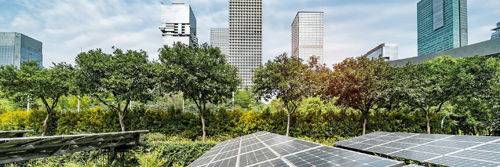The green economy transition
Holistic thinking, conscious decision- making and thoughtful design is required to foster a fairer, safer world for all, writes Inger Andersen, executive director, United Nations Environment Programme
We do not live in a fair or safe world.
A minority controls most of humanity’s wealth. We are seeing more natural disasters and migration driven by climate change, declining biodiversity and increasing resource conflicts, with the poor on the receiving end. Children die premature deaths due to pollution. Women still have less access to jobs and education, greater health risks and lower representation than men.
But the world is also changing. More than ever before, we recognise that current economic models encourage wasteful consumption and production, drive resource scarcities, and damage the environment and our health.
In response, we are accelerating down the road to more inclusive green economies – ones that are low carbon and circular. This transition is vital to the success of every international process – from the Paris Agreement on Climate Change to the 2030 Agenda for Sustainable Development to the post-2020 Global Biodiversity Framework.
As we make this transition, we have the chance to make the world a fairer and safer place by ensuring that the environmental, economic and social aspects of green growth benefit everyone. Green economies, after all, focus on minimising waste, resources and materials throughout the production and consumption process. This results in improved equity, health outcomes and job opportunities.
But a just transition will not happen by accident. It needs a conscious decision and design. As we redesign our economies, we need to think holistically – not just an adjustment here or a tweak there. We need system-wide transformations that adhere to the five principles of the green economy: human well-being, justice for all, respecting planetary boundaries, efficiency and sufficiency, and good governance.
To wring out every drop of benefit from the green economy and ensure fairness, we must remember that transitions also have negative effects. For example, while globalisation brought large, if uneven, benefits, it led to job losses. Globally, 22 million manufacturing jobs were cut between 1995 and 2002, even as industrial output increased by 30%.
Solutions for displaced workers
The challenge is not that there will be fewer jobs in a green economy. The International Labour Organization says that the switch to cleaner and more efficient forms of energy, for example, will actually bring a net gain of 18 million jobs. But issues will arise regarding stranded assets and communities, lost revenues and skill sets – particularly in economies and communities that depend heavily on natural resource extraction. This means that pathways to green economic models must include policies on retraining, local solutions and support for displaced workers.
We also must consider the role that digitalisation, which is increasingly defining the future of work, will play. To be inclusive, we will require robust institutions and a strong public sector to rein in the concentrating tendencies of capital and ‘winner takes all’ technologies, as economists Mariana Mazzucato and Thomas Piketty so eloquently argue in their work on these issues.
There is much more that we can and need to do as part of the just transition, as the UN Environment Programme report Uncovering Pathways towards an Inclusive Green Economy lays out.
We must create social floors to guarantee basic healthcare and income security. We must create institutions and mechanisms for equitable access to, and sharing of, benefits from natural resource development. We need to end fossil fuel subsidies. As UN secretary-general António Guterres has noted, it is time to tax pollution, not people. We need to get the global financial system to shift its capital behind sustainability. We need to invest in education, skills and ecological infrastructure.
The transition will be complex and difficult to manage. But we are in a better position now than any of our predecessors, who more often than not adapted to change rather than shaped it. We have the knowledge, tools and skills we need to design robust and green economic models that increase food security and livelihoods, access to energy, clean air and water, and allow ecosystems to thrive.
The transition to a green economy will not solve all of the world’s problems. There will still be inequality, upheaval and conflict. But we can make the world fairer, safer and more sustainable for generations to come. And isn’t that what all of us really want?












